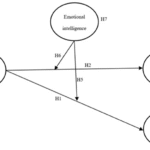In 2025, blogging is more competitive than ever, and to stay ahead, bloggers need the right tools to optimize their workflow, improve content quality, and increase their reach. Whether you’re a seasoned blogger or just starting out, the right software can make a huge difference in how efficiently you run your blog. In this article, we’ll explore the best blogging software tools that can help you succeed by improving productivity, boosting engagement, and driving traffic to your site.
1. WordPress: The Core of Your Blogging Strategy
WordPress remains the most popular platform for bloggers in 2025. Its user-friendly interface, vast plugin library, and customizable themes make it the perfect platform to create and manage a blog. With built-in SEO features and the ability to integrate third-party tools, WordPress serves as the backbone of many successful blogs.
Why it’s important:
WordPress allows bloggers to focus on content creation without worrying about technical aspects. Its flexibility makes it suitable for any type of blog, whether it’s personal, niche, or business-focused, offering scalable options as your blog grows.
2. Grammarly: Improve Writing Quality with AI
Grammarly is an AI-powered tool that helps bloggers enhance their writing. It offers suggestions for grammar, punctuation, style, and tone, ensuring that every blog post is polished and professional. Grammarly also provides real-time readability analysis, making it easier for bloggers to write clear, engaging content that resonates with their audience.
Why it’s important:
Quality writing is critical for building trust and engagement with your audience. Grammarly helps bloggers catch mistakes before publishing, reducing the time spent on editing and improving the overall quality of the content. This tool is indispensable for bloggers who want to consistently produce high-quality posts.
3. Yoast SEO: Optimize Your Blog for Search Engines
Yoast SEO is a comprehensive plugin for WordPress that helps bloggers optimize their content for search engines. It provides real-time feedback on keyword usage, readability, meta descriptions, and internal linking, ensuring that your blog posts are SEO-friendly and aligned with best practices.
Why it’s important:
SEO is the foundation of growing organic traffic to your blog. Yoast SEO makes it easy to follow on-page optimization guidelines, improving your chances of ranking higher in search engine results and attracting targeted visitors.
4. Canva: Design Stunning Visuals with Ease
Canva is an online design tool that allows bloggers to create eye-catching visuals without needing advanced design skills. Whether you need blog post images, social media graphics, or infographics, Canva’s drag-and-drop interface and vast library of templates make designing easy and efficient.
Why it’s important:
Visuals are essential for engagement and improving user experience. Canva helps bloggers quickly design professional graphics that complement their content, which increases the chances of your posts being shared on social media and boosts SEO by keeping users on your site longer.
5. Google Analytics: Track and Optimize Blog Performance
Google Analytics is a must-have tool for tracking your blog’s performance. It provides valuable insights into website traffic, audience demographics, user behavior, and content performance. By analyzing this data, bloggers can make informed decisions about content strategy, audience targeting, and site optimization.
Why it’s important:
Understanding how readers interact with your blog is essential for growth. Google Analytics helps bloggers identify high-performing content, optimize underperforming pages, and better understand their audience, leading to more effective content strategies and improved blog performance.
6. Trello: Organize and Plan Content Efficiently
Trello is a project management tool that helps bloggers organize their content calendar, manage tasks, and track deadlines. It uses boards, lists, and cards to keep track of writing, editing, and publishing tasks, ensuring that your content creation process is streamlined and efficient.
Why it’s important:
Consistency is key for successful blogging. Trello helps bloggers stay on top of their editorial calendar, plan posts in advance, and ensure deadlines are met. It’s also great for collaborating with guest writers or other team members, making it easier to manage content projects.
7. Hootsuite: Automate Social Media Management
Hootsuite is a social media management tool that allows bloggers to schedule and manage posts across various platforms, including Twitter, Facebook, Instagram, and LinkedIn. With Hootsuite, bloggers can automate their social media posts, monitor engagement, and track performance, all from one dashboard.
Why it’s important:
Social media is a powerful tool for driving traffic to your blog, but managing multiple platforms can be time-consuming. Hootsuite simplifies social media management, allowing bloggers to focus on content creation while ensuring a consistent social media presence that promotes blog posts.
8. Mailchimp: Build and Engage Your Email List
Mailchimp is an email marketing platform that helps bloggers build, segment, and engage their email lists. You can create custom email campaigns, send newsletters, and automate follow-ups. Mailchimp also integrates with your blog, allowing you to grow your subscriber base and keep your readers informed about new content.
Why it’s important:
Email marketing is one of the most effective ways to nurture relationships with your audience. By building an engaged email list, you can directly communicate with your readers, promote new blog posts, and drive repeat traffic to your site.
9. BuzzSumo: Discover Content Trends and Insights
BuzzSumo is a content research tool that helps bloggers find trending topics and popular content in their niche. By analyzing the most shared content on social media and the web, BuzzSumo provides valuable insights into what topics are resonating with audiences, allowing bloggers to create timely and relevant content.
Why it’s important:
Staying up to date with trends is critical for keeping your content relevant and engaging. BuzzSumo helps bloggers identify popular topics, which can inspire new blog posts and ensure that your content aligns with current interests in your niche.
10. Zapier: Automate Repetitive Tasks
Zapier is an automation tool that allows bloggers to connect various apps and automate workflows. For example, you can set up a Zap to automatically share new blog posts on social media, save blog comments to a Google Sheet, or add email subscribers to your Mailchimp list.
Why it’s important:
Automating repetitive tasks saves time and increases productivity. By using Zapier, bloggers can streamline their workflow, allowing more focus on content creation and less on administrative tasks. This boosts efficiency and ensures that essential tasks are completed consistently.
Conclusion
In 2025, blogging success depends on using the right software tools to optimize content creation, improve SEO, and enhance engagement. From managing your blog’s content to tracking performance and automating social media posts, these essential tools streamline your workflow and help you achieve greater productivity. By incorporating these tools into your blogging routine, you can focus more on what matters—creating valuable, high-quality content that resonates with your audience.



